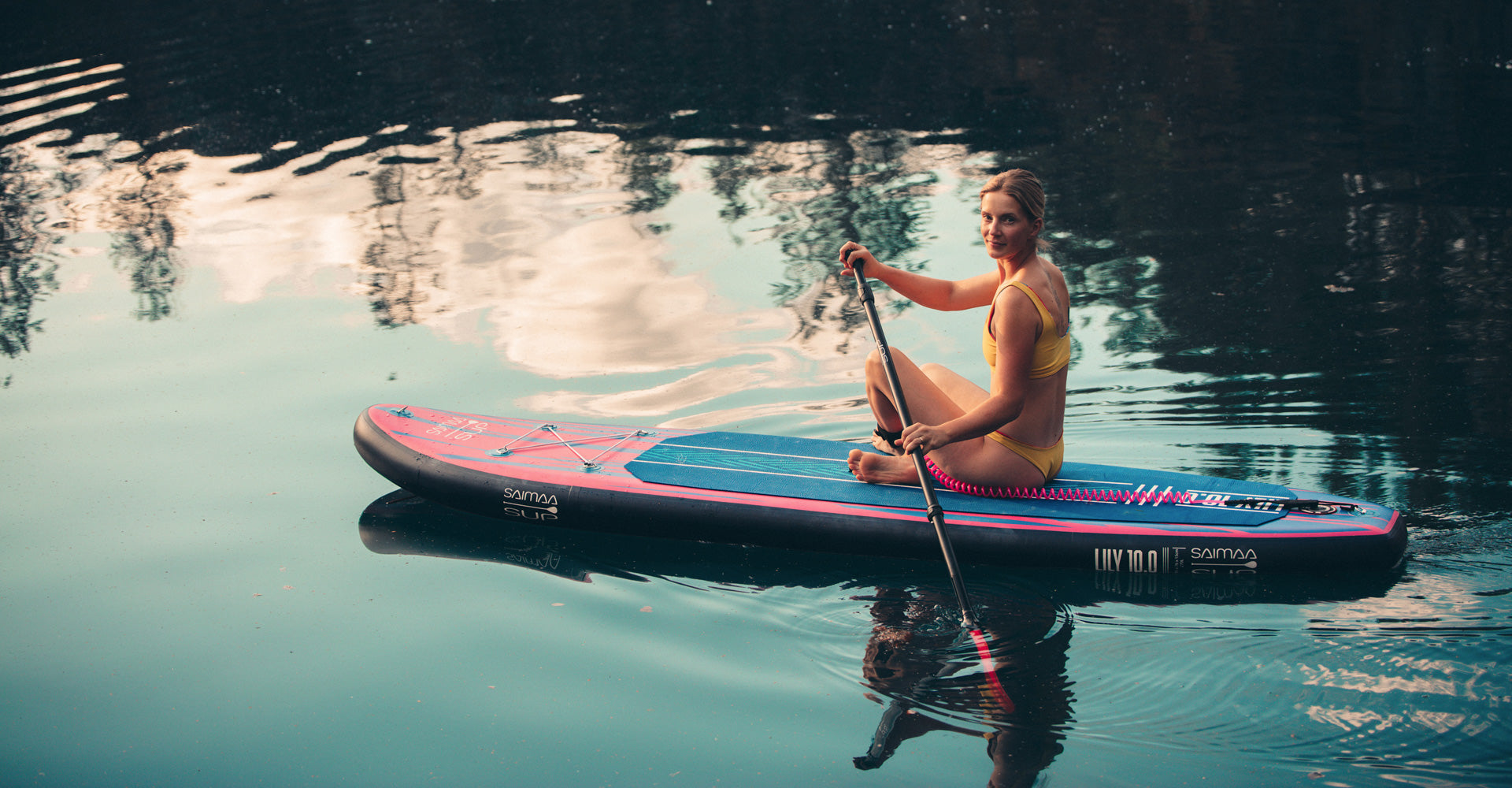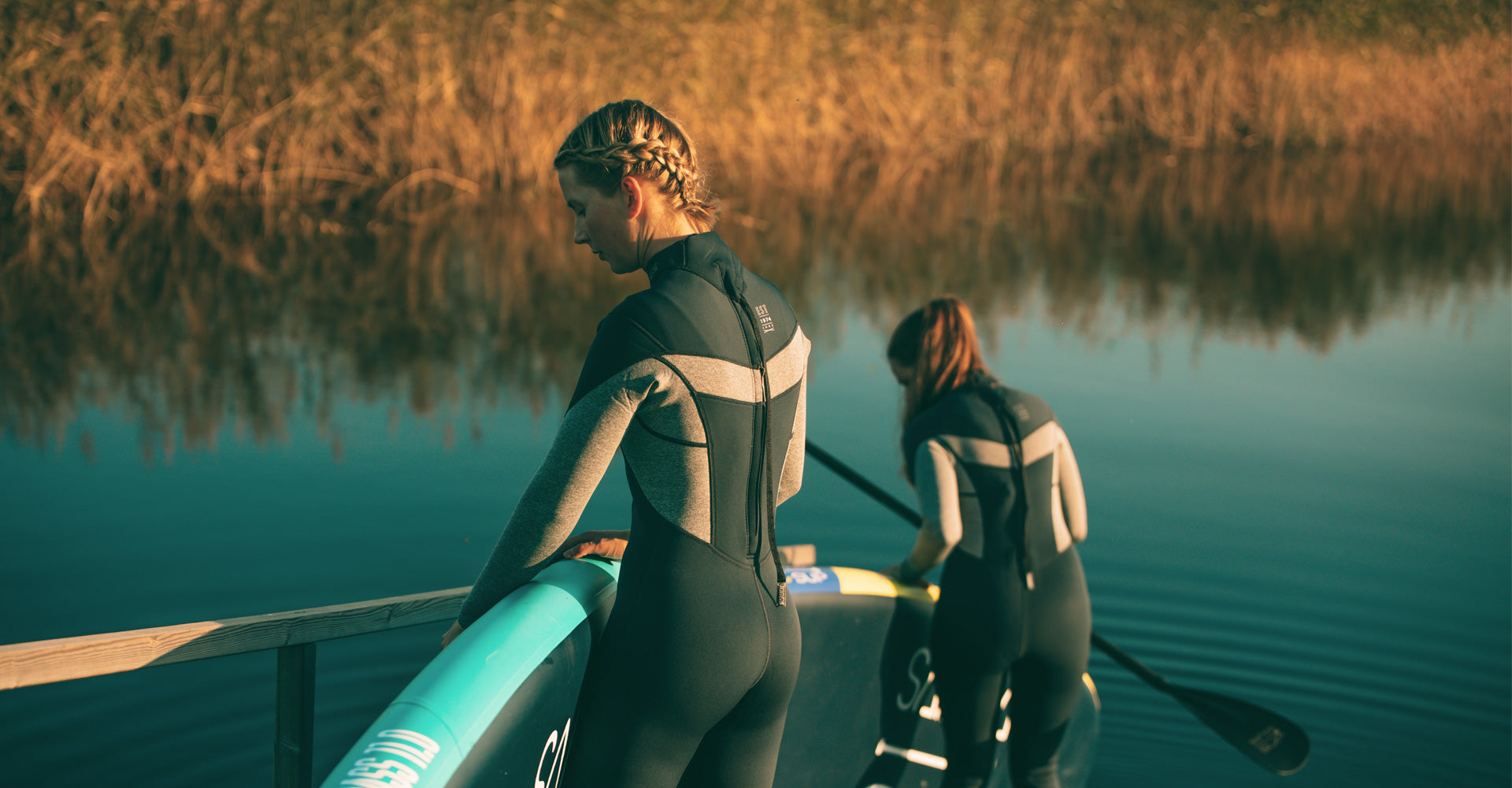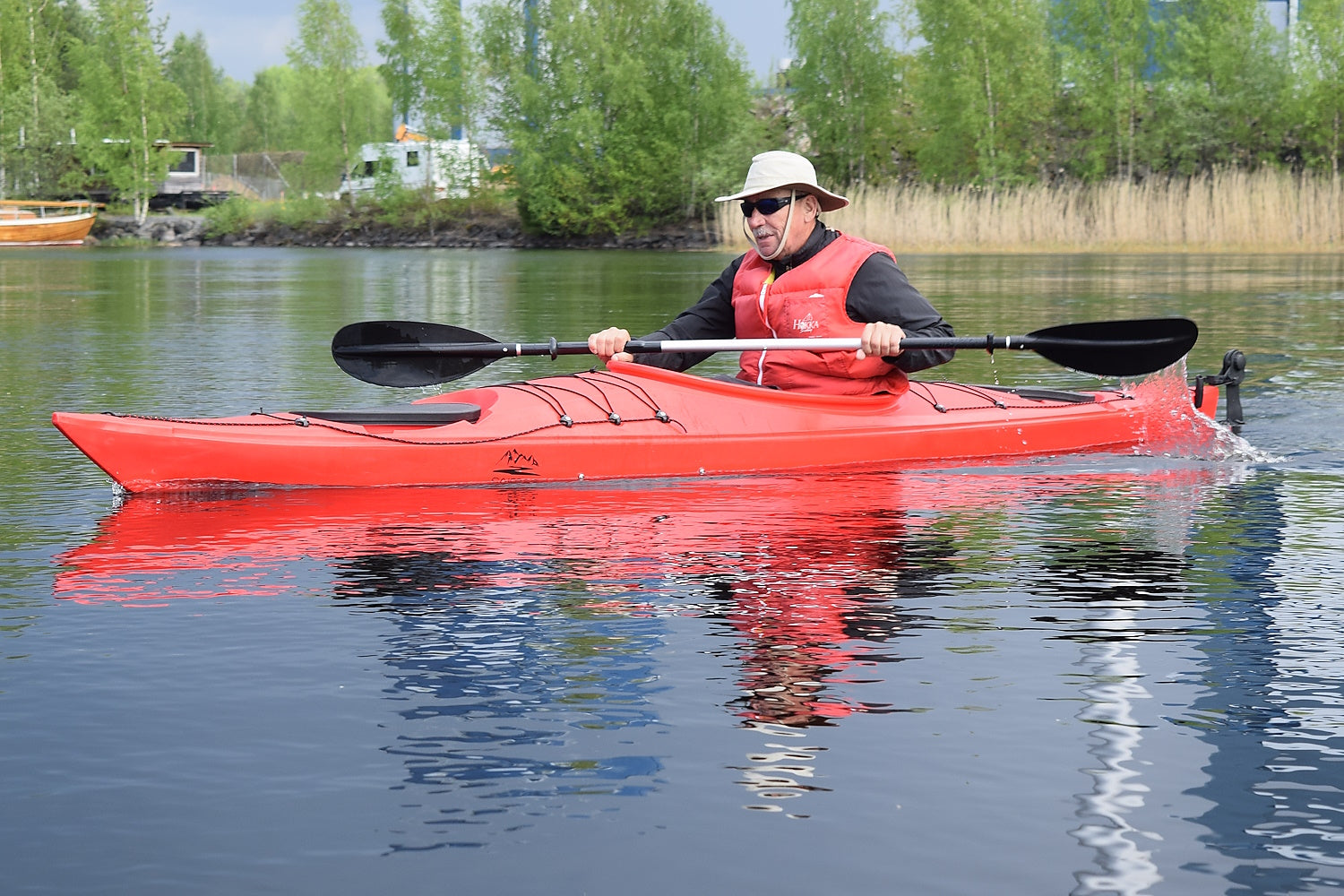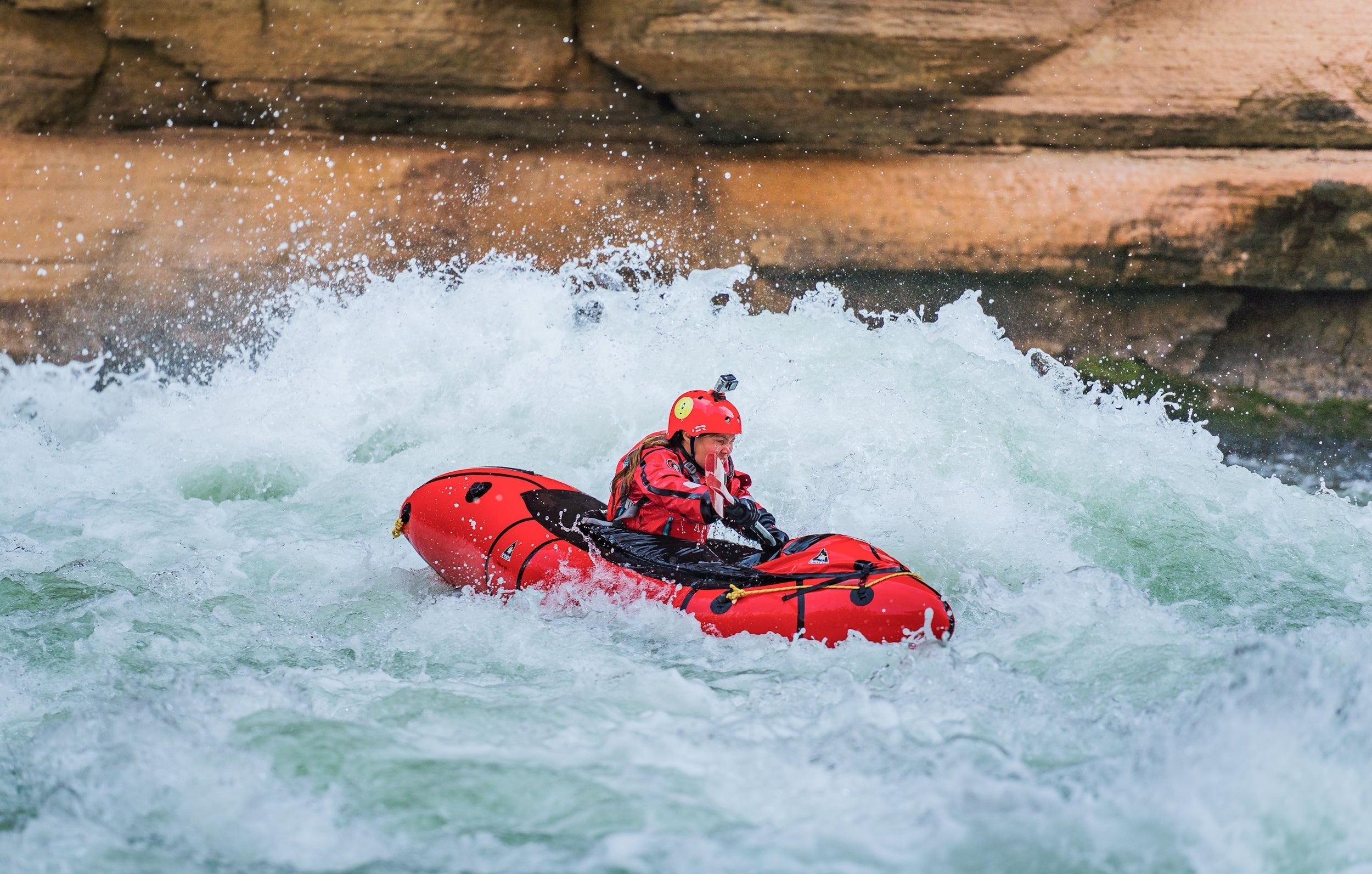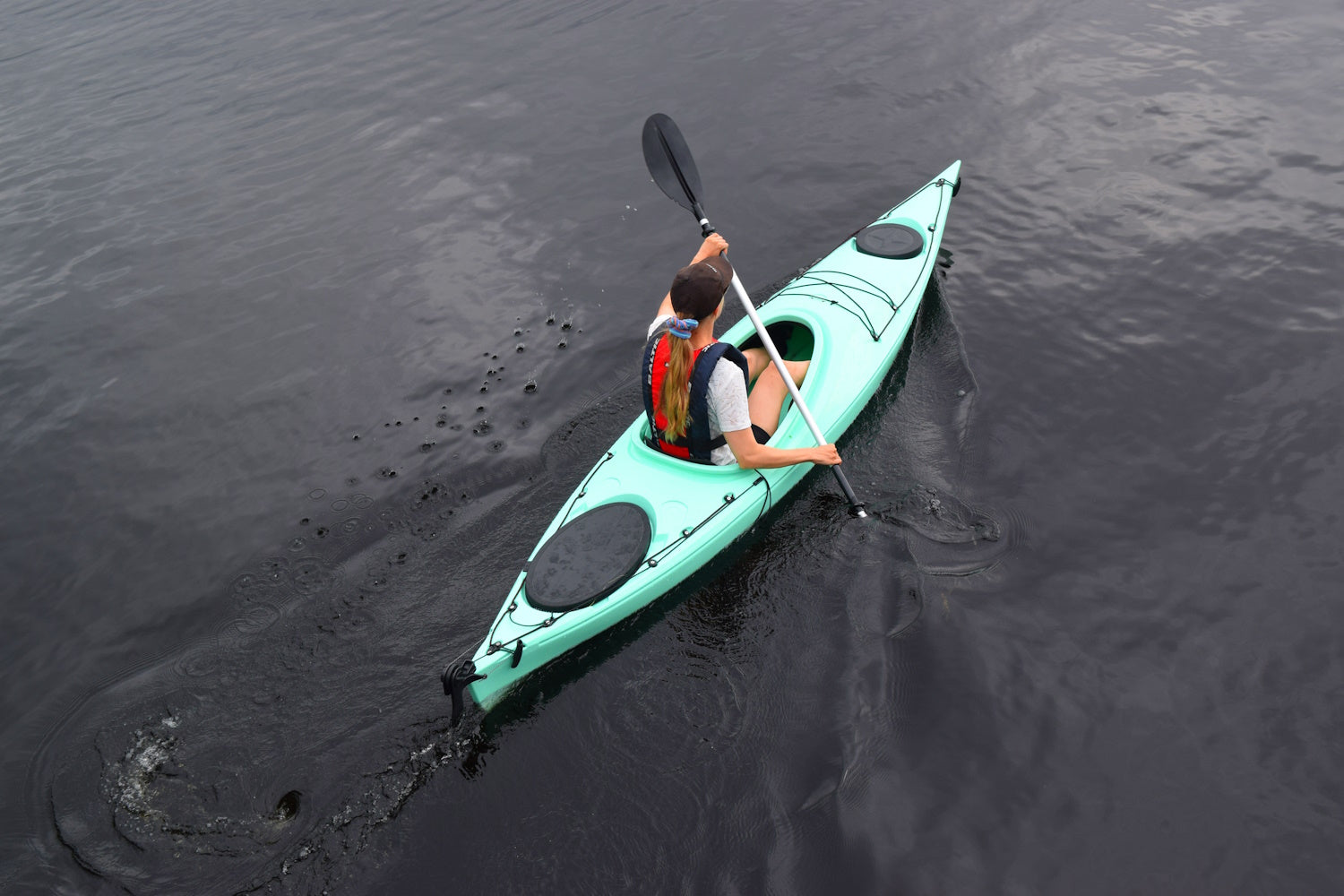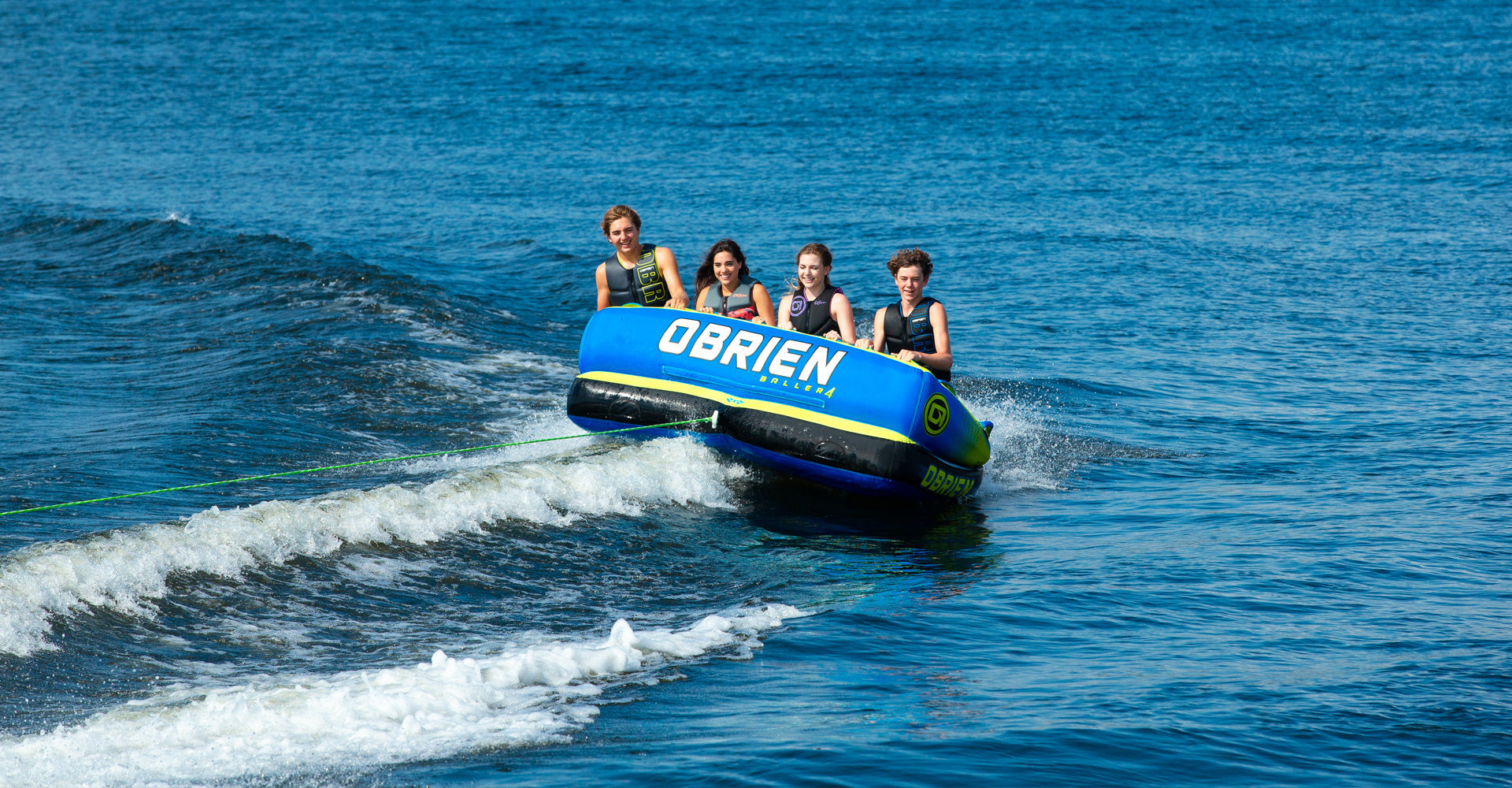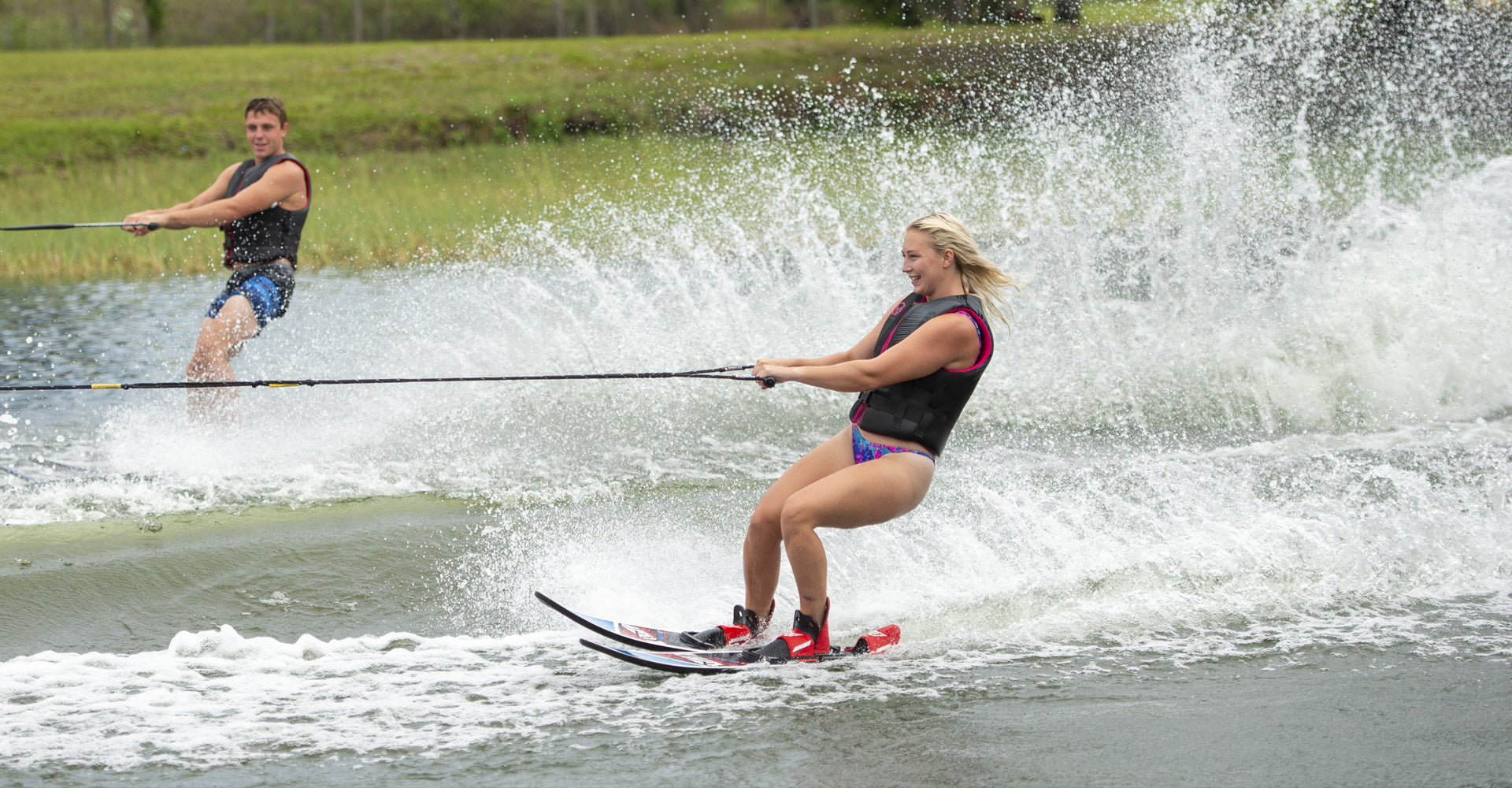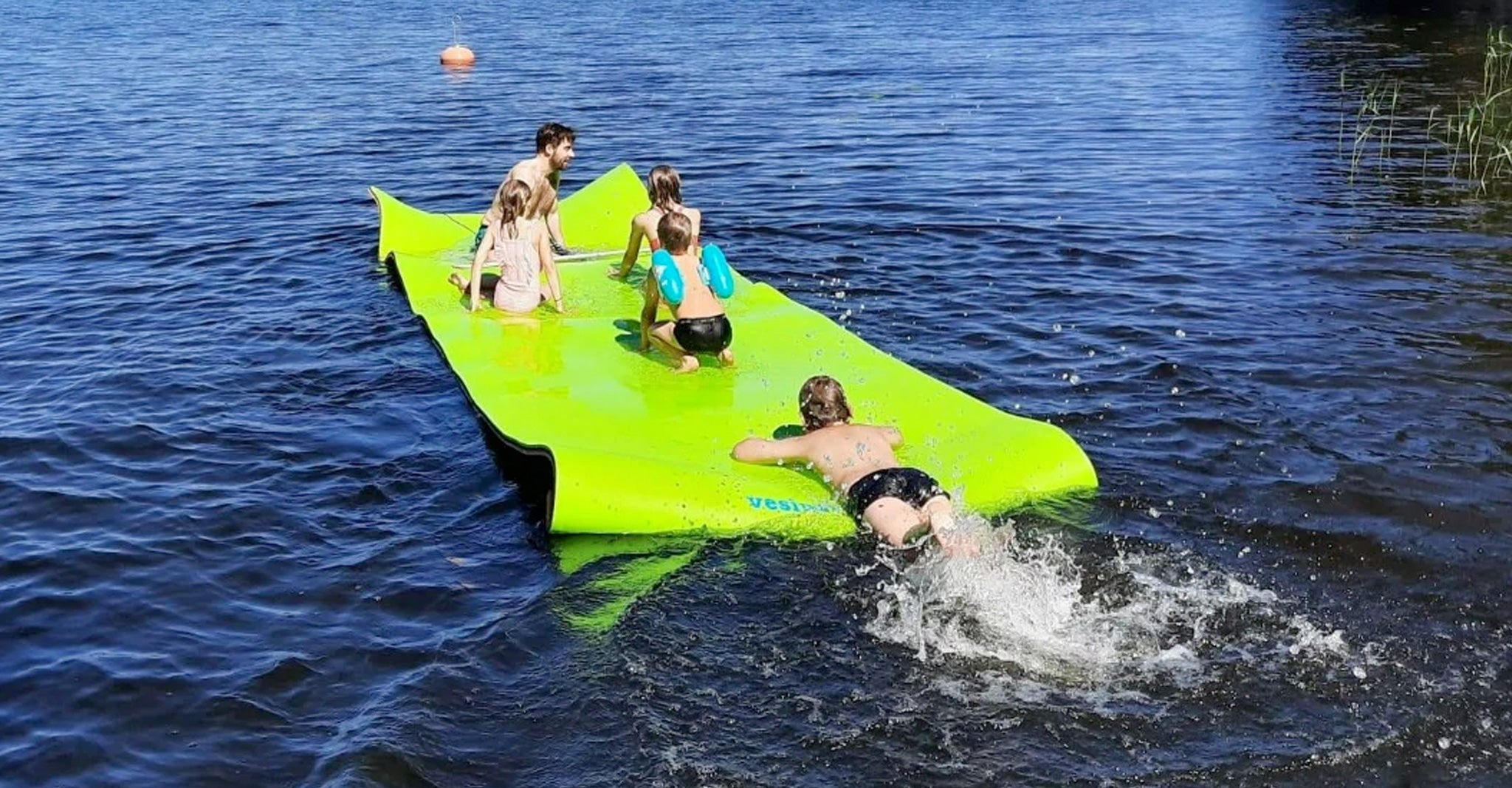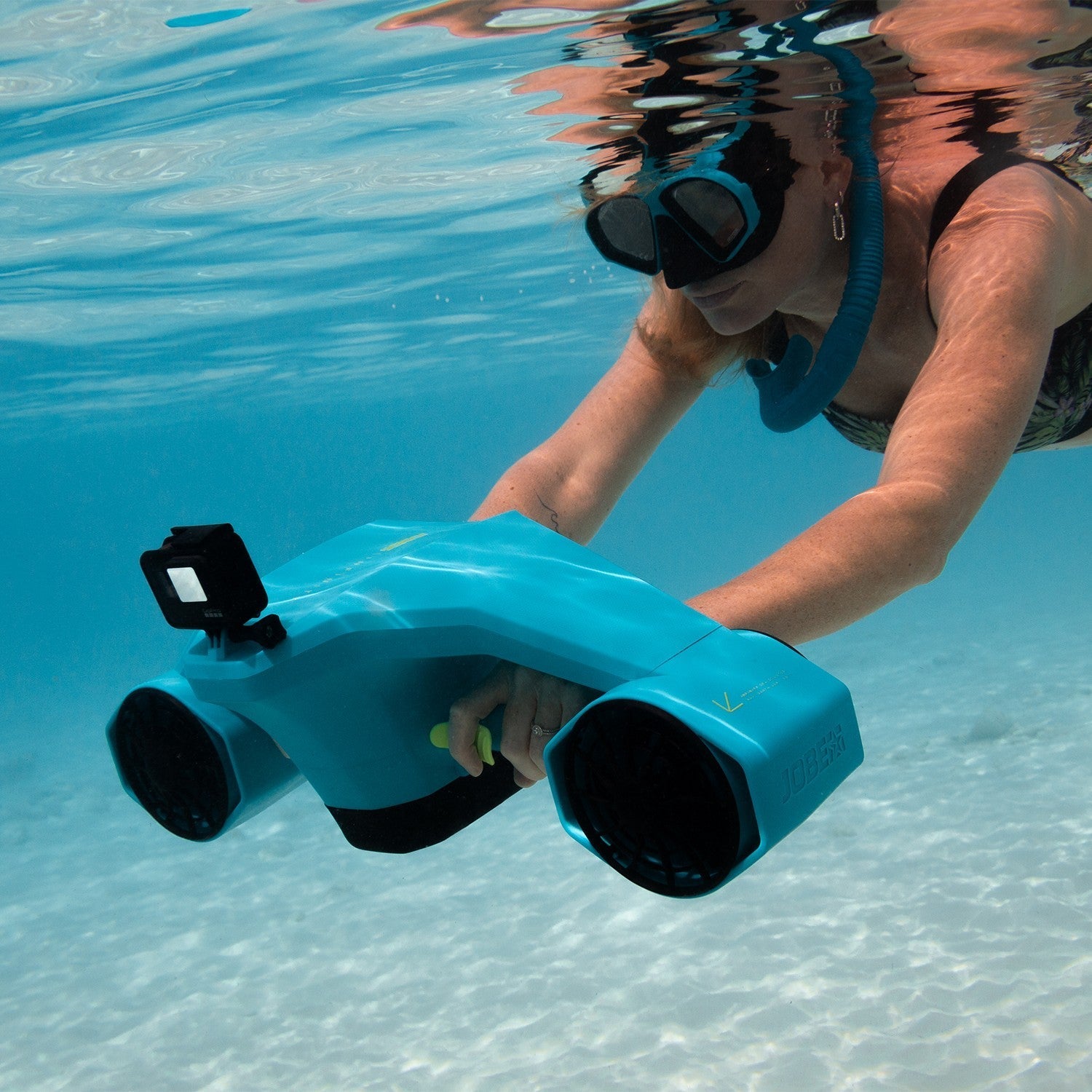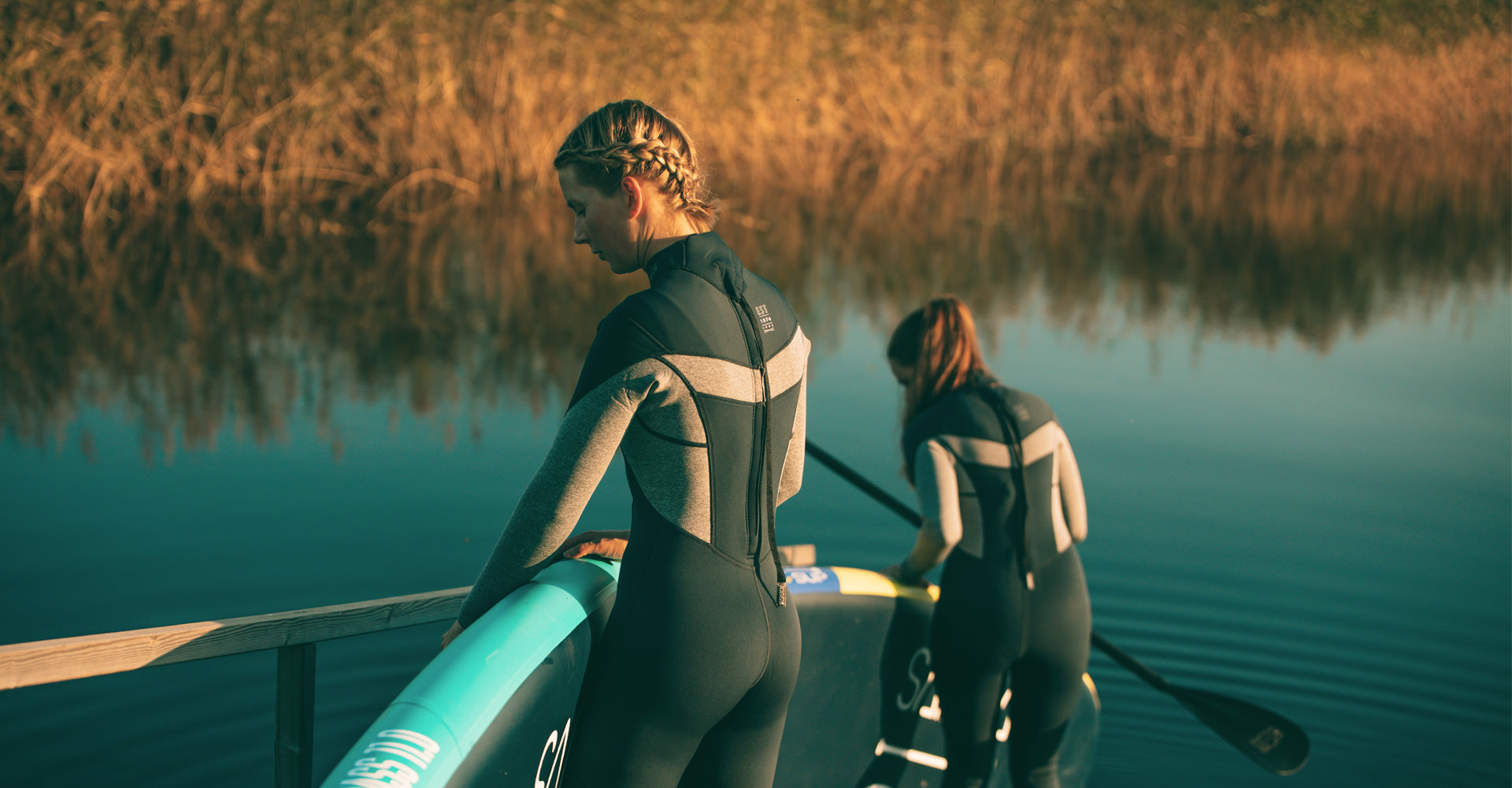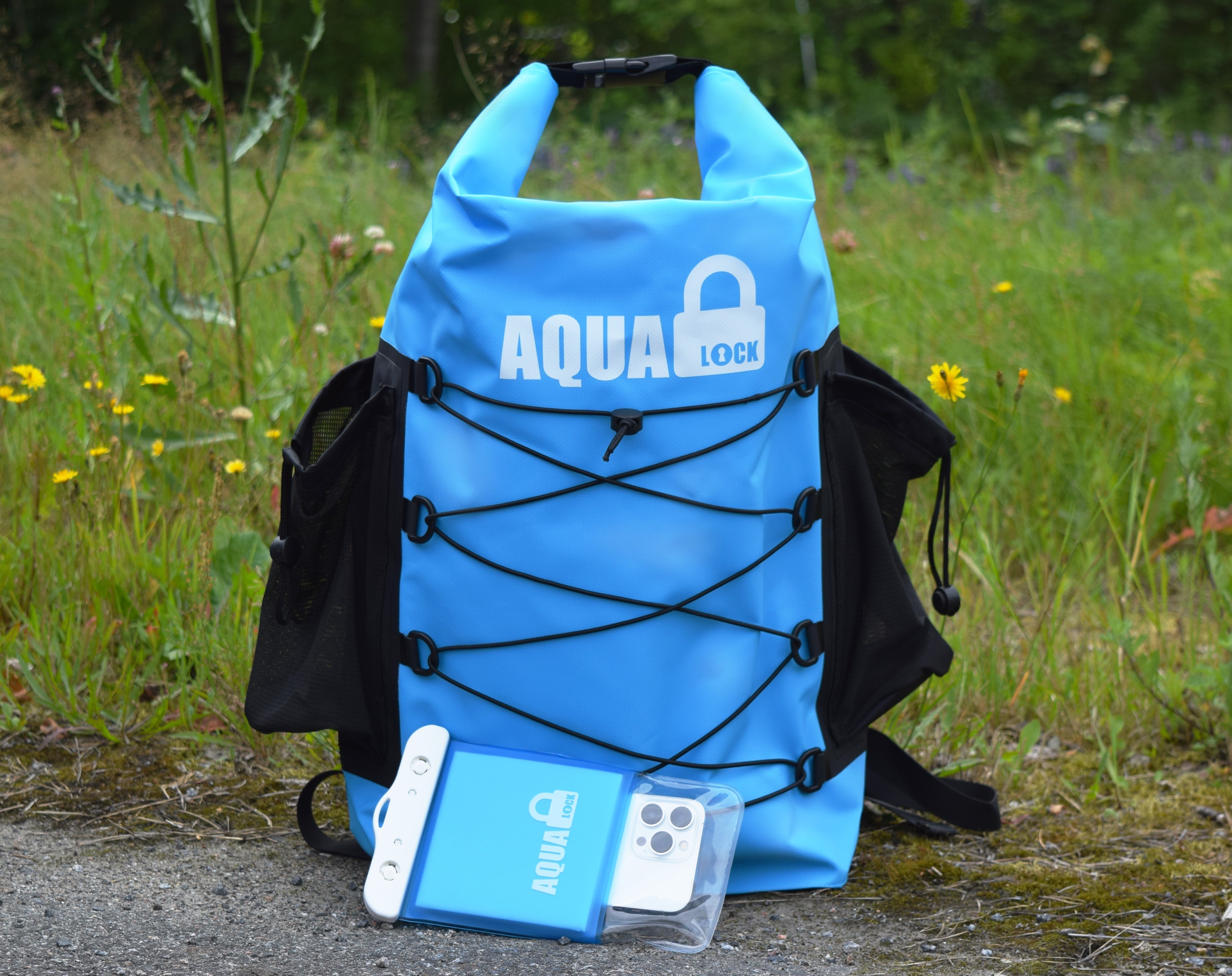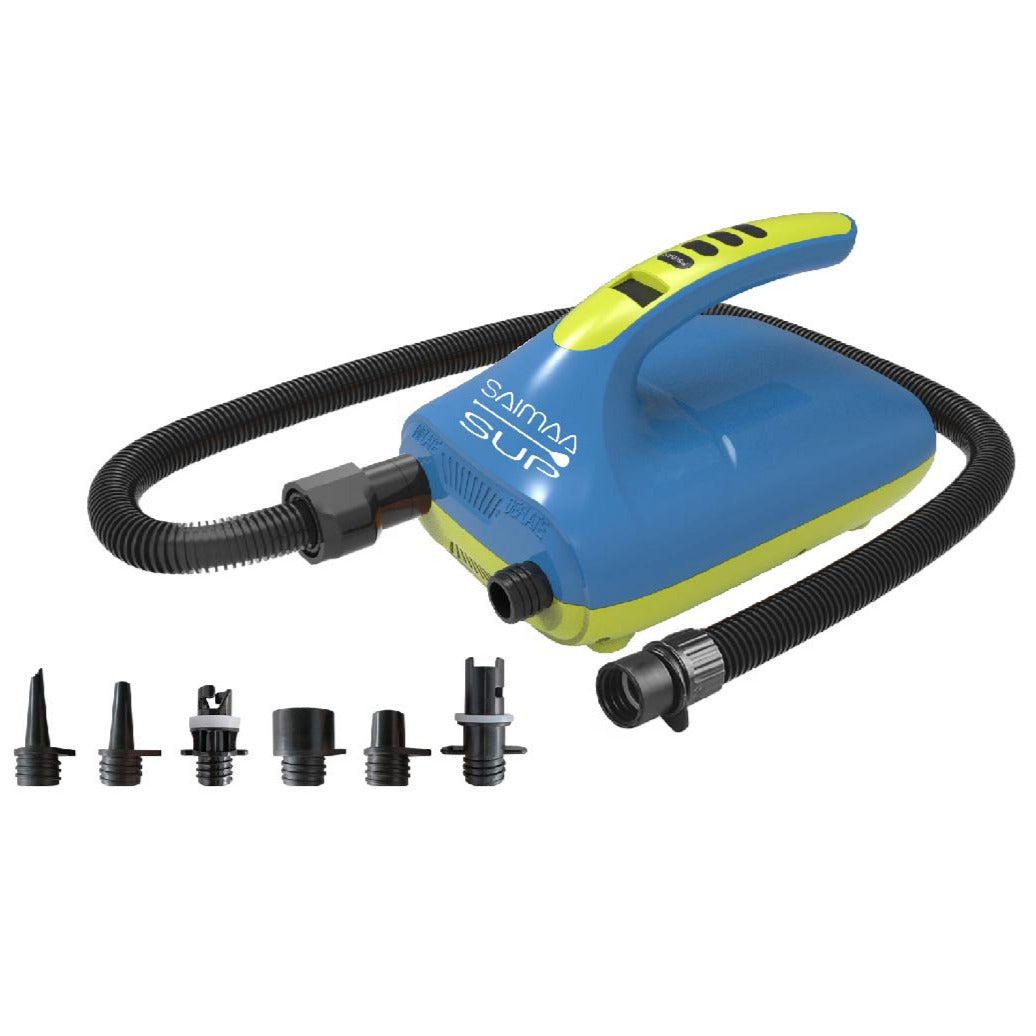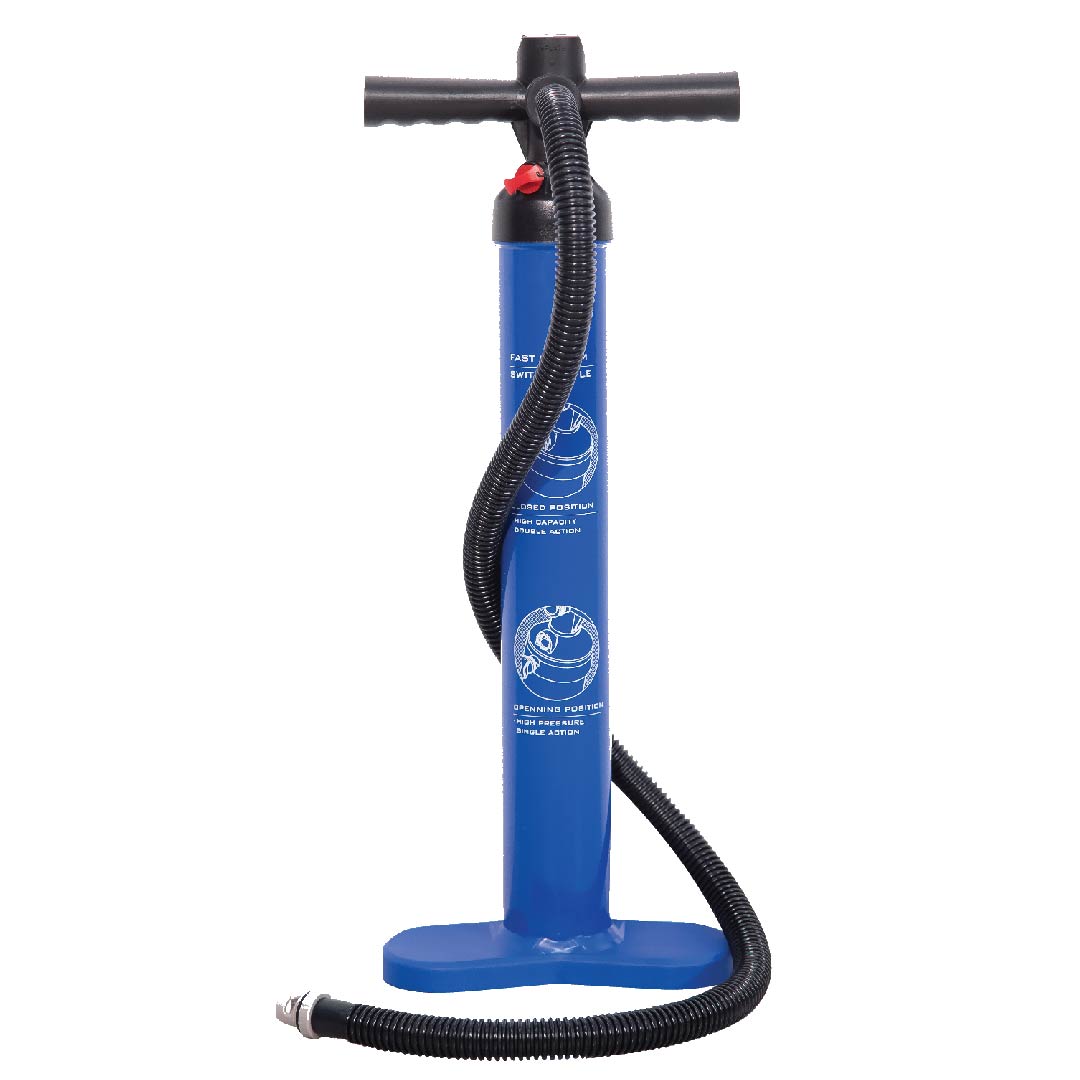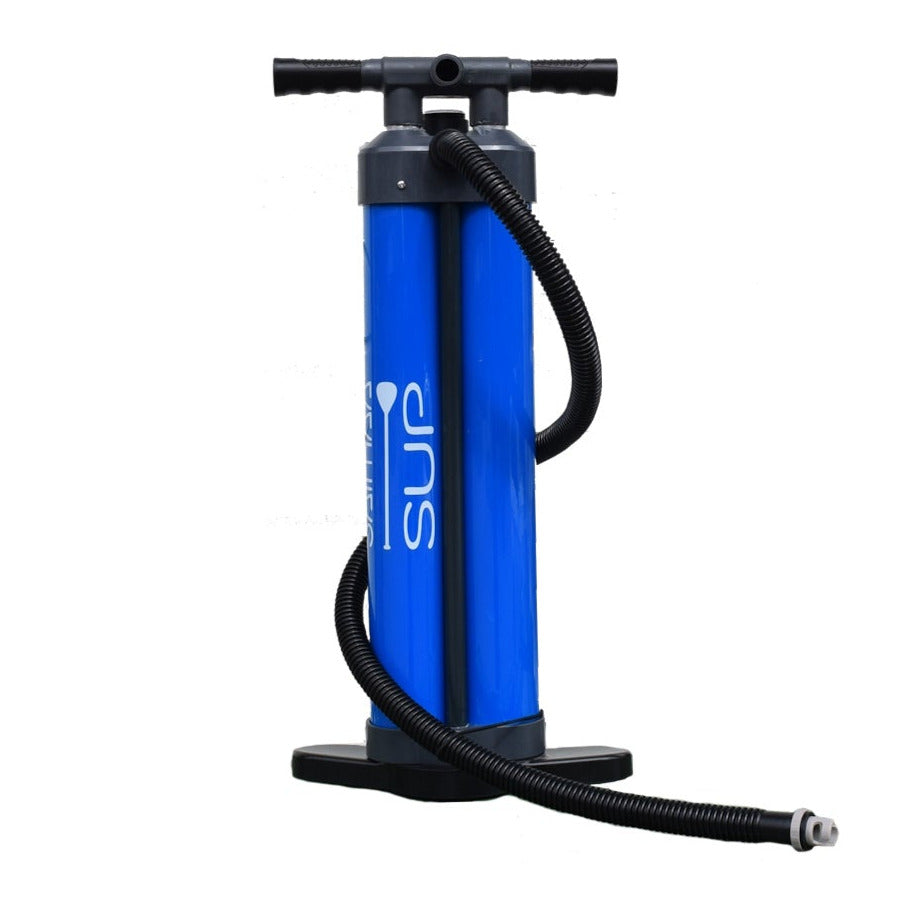filling the sup-board
Take the board out of the backpack and lay it flat on an even surface. Open the valve cap. Make sure the valve pin in the center of the valve is in the up position — this means the valve is closed.
Next, insert the pump hose into the valve and twist it to lock in place. The end of the hose will automatically open the valve as you start pumping. When you remove the hose, the spring will return the valve to its closed position.
If the valve happens to be open when you connect the pump hose, you can still inflate the board — but when you remove the hose, all the air will escape because the spring won’t close the valve. Once you make this mistake once, you’ll always remember to check the valve position before pumping! 🙂
To open or close the valve, press the pin down gently and turn it about 10 degrees. The pin tip is usually marked red or yellow for visibility.

Most SUP pumps are dual-action, meaning you can choose whether the pump inflates both when pulling up and pushing down, or only when pushing down. There are also lighter triple-action pumps and convenient electric pumps available.
In the beginning, the dual-action mode helps fill the board quickly, but as pressure builds, the upward stroke becomes heavy. At this point, it’s best to switch to single-action mode, where air is pumped only when pushing down — this lets you use your body weight for easier pumping. The switching method depends on the pump model: on some, you insert a plug hanging on a string at the side of the cylinder, while on others you simply turn a lever.
Once the board is fully inflated, close the valve cap. Remember that the pressure gauge won’t start rising immediately — it only reacts once the board is already quite firm and the internal pressure starts to build up.
Next, install the fin by sliding it into place and securing it according to the system your board uses. Some fins lock with a clip-in strap like those from Aqua Marina, others use a hand-tightened screw like Jobe fins, and some — such as the Saimaa SUP Sun, Moon, and Joe Bamboo boards — feature tool-free fin systems. Models like the Jobe Titan use a US Fin Box, where the fin is fixed with a sliding washer and a cross-head screw.
After the fin is secured, adjust the paddle length to match your height and paddling style, put on your life vest, grab the board by the center handle, and you’re ready to head out and enjoy the water!

SUP PUMPS
View all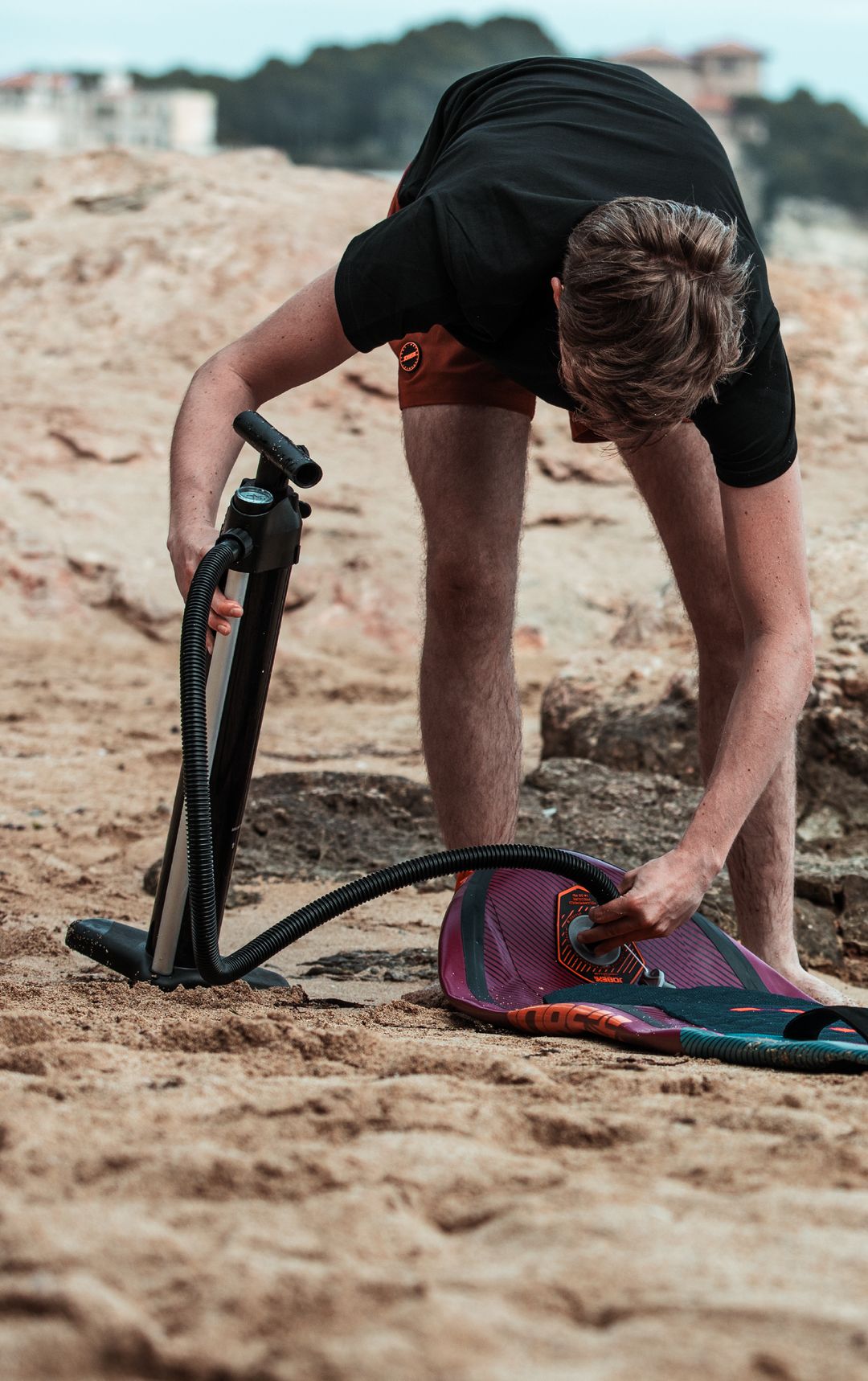
Deflating your SUP
Lift the board onto the ground and remove the fin. Dry the board thoroughly or let it air dry if you plan to store it in the backpack for a longer period. Place the board deck side up on a flat surface and open the valve cap. Press the valve button all the way down to open the valve and twist it slightly to lock it in the open position.
Tip: When releasing air under pressure, the noise can be quite loud. To protect your ears, support one ear with your hand and rest the other against your shoulder before opening the valve with your free hand.
The valve is usually located at the rear of the board, so start rolling from the nose (bow). For a tighter roll, make sure to smooth out the final folds so the fin box fits neatly, giving you a smaller, more compact roll. Rolling is easier on boards with a foldable fin box design.
Once the board is completely rolled up and all air has been released, unlock the valve button to return it to the closed position for the next inflation. Then, close the valve cap and secure the rolled board using the tensioning strap that came with it. Pack the board and all accessories neatly into your backpack.
Note: The valve wrench (usually a grey plastic tool resembling a fishing reel handle) that comes with the board is only needed if the valve needs tightening or replacement—for example, if it was loose from the factory or damaged. You do not need the valve wrench for deflating the board.
For more tips, check out the section on SUP board storage and maintenance for detailed care instructions.


